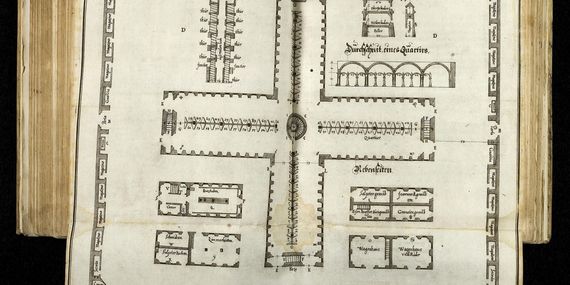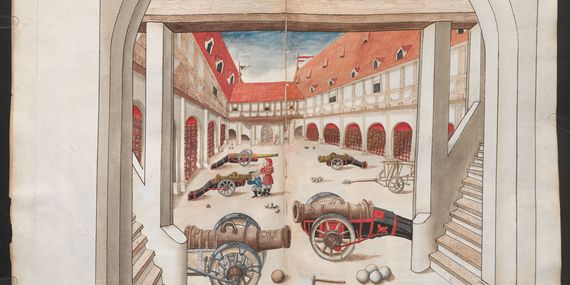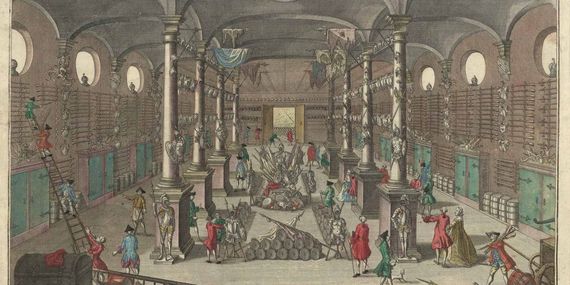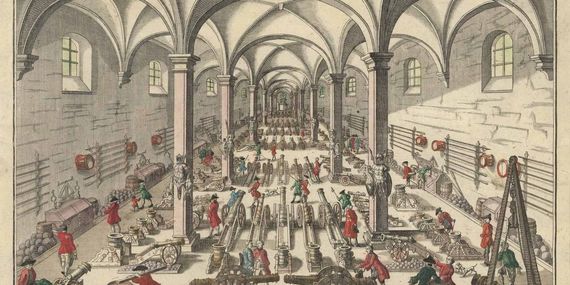Kettenhemd (Oberhausmuseum Passau).
Copyright: Oberhausmuseum Passau
Representative Armouries
In addition to their practical use, the storages and armouries usually also had to herald the wealth and power of their owner, who were allowed to collect taxes and carry weapons.
For the same reason Emperor Maximilian I, had the armouries of his territory, including their contents, displayed in magnificently illustrated inventories. Joseph Furttenbach, who published the ideal design for an arsenal in 1635, aimed to ensure that the biggest cannons and weapons had to be set up centrally for giving "an exquisite: heroic sight of eye desire". He then gives precise instructions on how to lead strangers through the armoury adequately.
The rulers’ need for representation occasionally collided with the requirement of military secrecy or the fear of espionage and sabotage. Furttenbach, for example, recommended that the largest cannons be placed centrally because they would then "be looked at with strange eye lust at all places of the Zeughauß". On the other hand, the existing ammunition should be kept in locked cabinets: "although strange persons may walk through / so they can't see the supply of the canonballs / nor attain other knowledge / much less mix up some things". A stranger should never be able to act independently in the arsenal, "but he should be concentrate on strolling around".
Two pictures from the 18th century show how the display of weapons in armouries served to represent its owner. However, not all theorists argued for representative armouries at that time. In 1744 Johann Friedrich Penther saw them as purely functional buildings which, like prisons, were to be built "where they don't fall into sight much".



